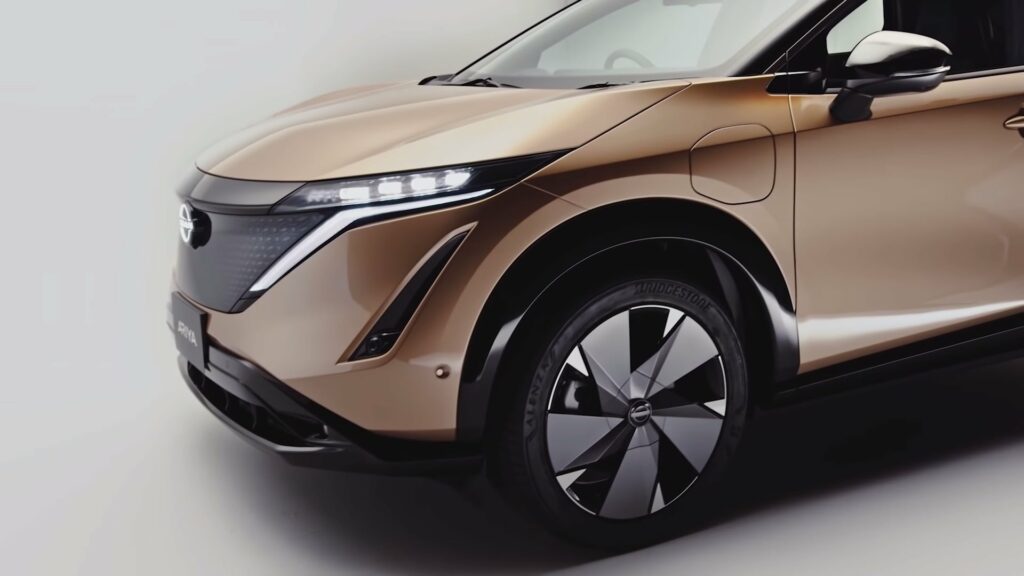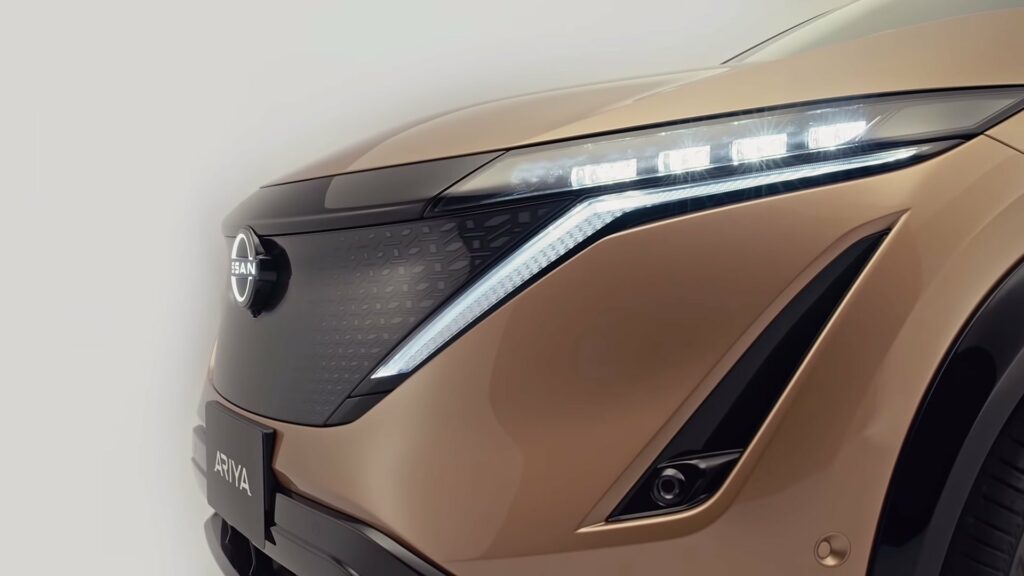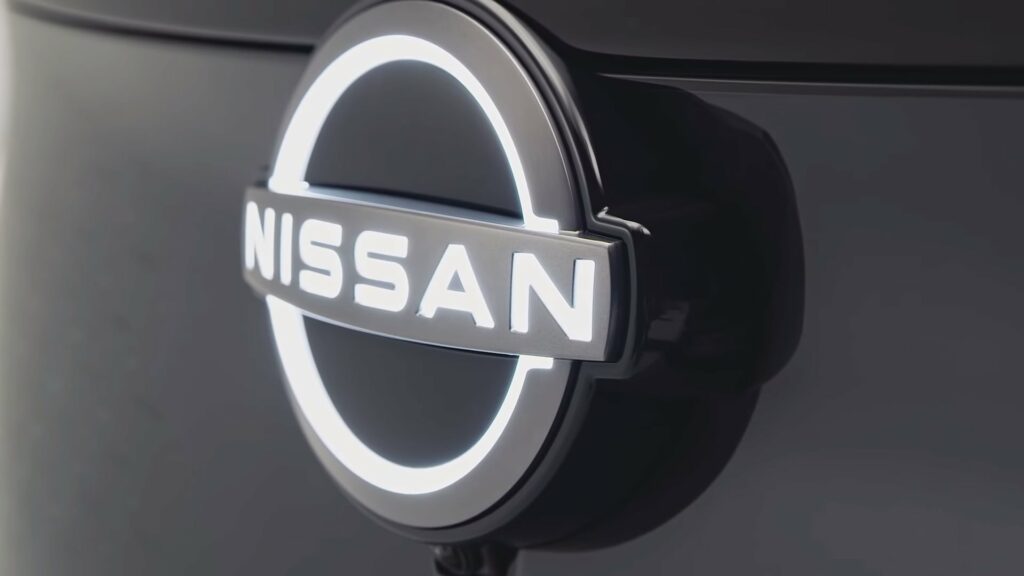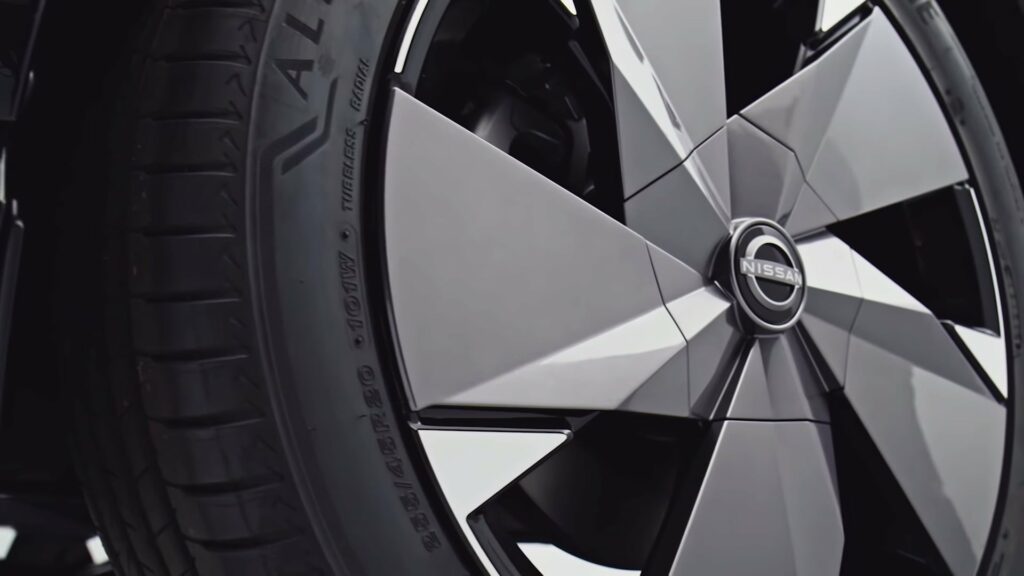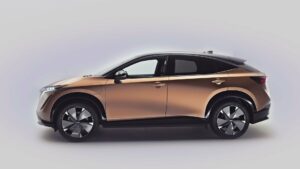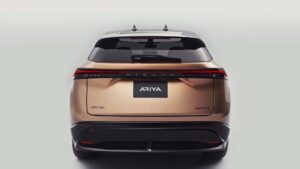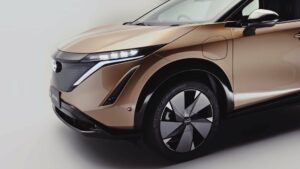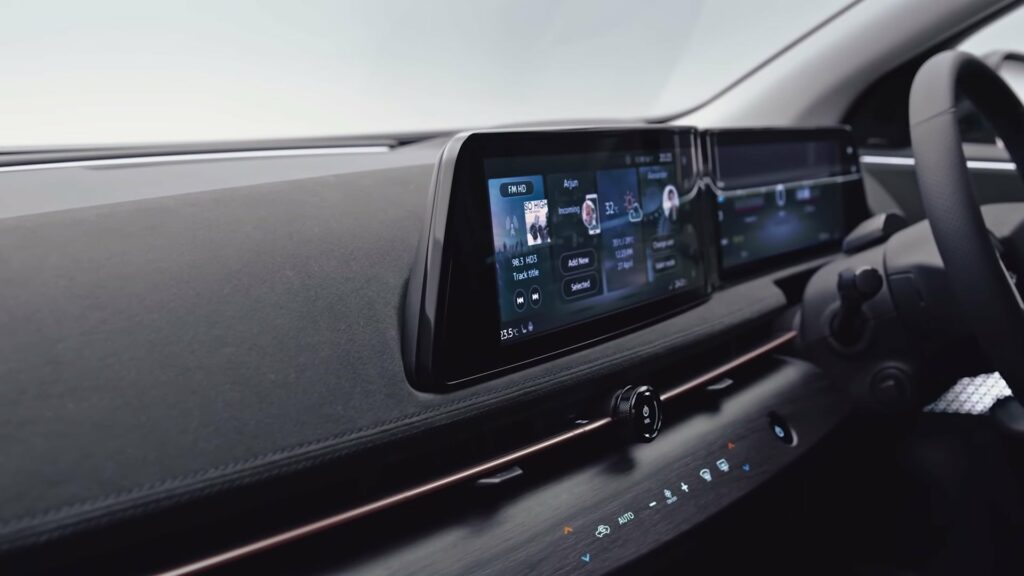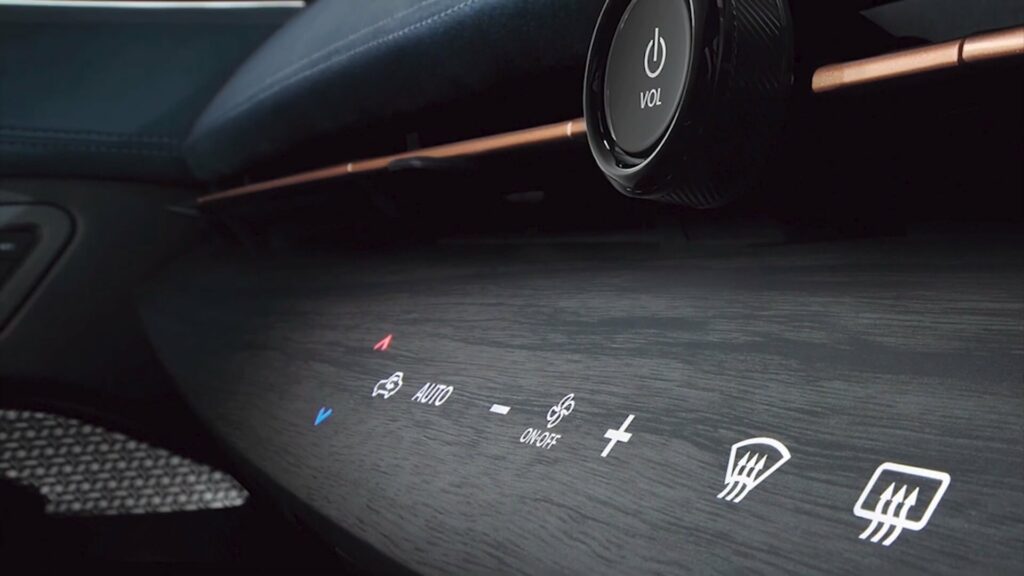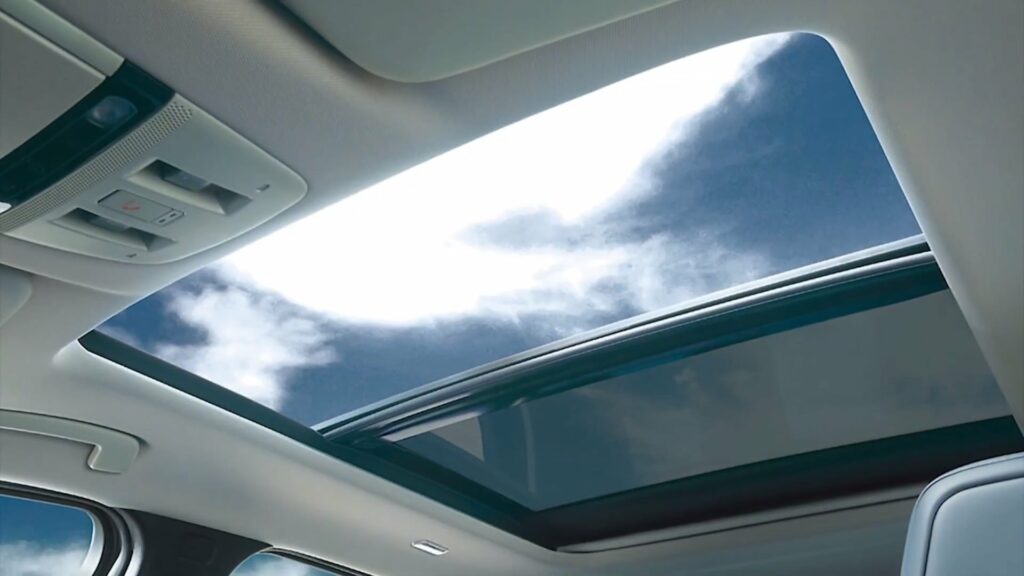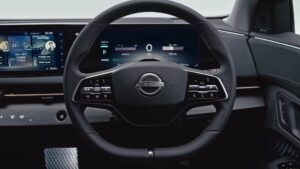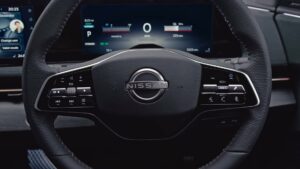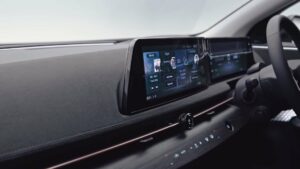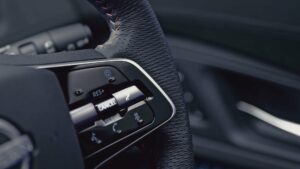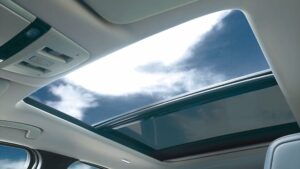Nissan Ariya 63kWh
The Nissan Ariya 63kWh is an all-electric compact SUV unveiled by Nissan in 2020. It is part of Nissan’s new lineup of electric vehicles and is expected to be available for purchase in some markets in 2021.
The Ariya 63kWh has a 63kWh battery pack that provides up to 335 km of range on a single charge. The electric motor delivers 160 kW, and 300 Nm of power for smooth and powerful driving.

The exterior design of the Ariya 63kWh is sleek and modern, with a distinctive grille and clean lines. The interior is spacious and comfortable, with a minimalist design that includes a large infotainment screen and a digital instrument cluster.
The Ariya 63kWh is equipped with advanced features such as ProPILOT Assist 2.0, which provides driver assistance on the highway, and e-Pedal, which lets you operate the car with a single pedal. It is also equipped with a number of other safety and convenience features, including adaptive cruise control, lane departure warning, and blind spot monitoring.
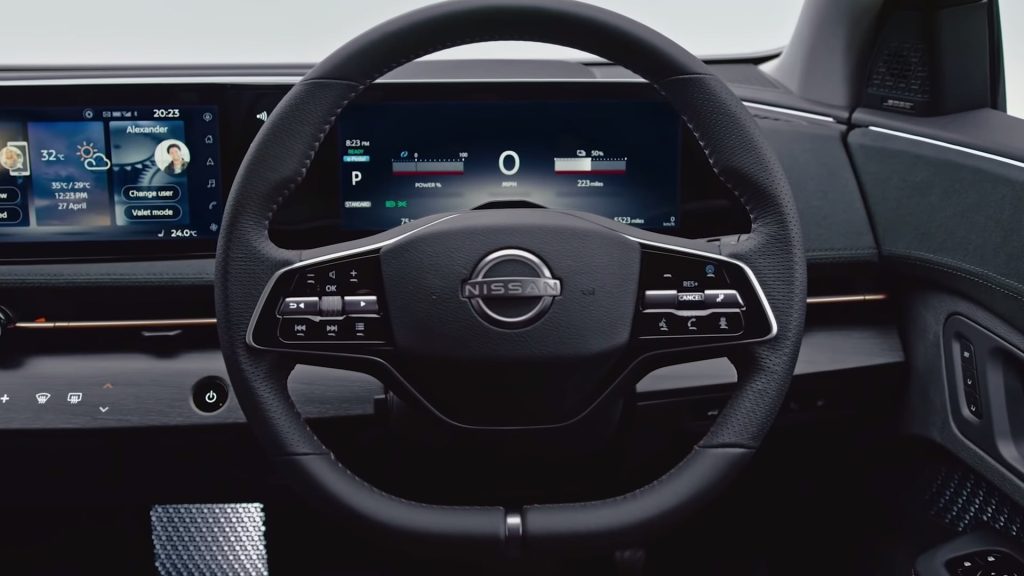
Overall, the Nissan Ariya 63kWh is a great option for those looking for a stylish and powerful electric SUV with advanced features and a comfortable driving experience. It epitomizes Nissan’s commitment to the future of electric mobility and is sure to be a popular choice among electric vehicle enthusiasts.
| Performance | ||
| Acceleration 0 – 100 km/h | 7.5 sec | |
| Top Speed | 160 km/h | |
| Electric Range | 335 km | |
| Total Power | 160 kW (218 PS) | |
| Total Torque | 300 Nm | |
| Drive | Front | |
| Battery and Charging | ||
| Battery Capacity | 65.0 kWh | |
| Battery Useable | 63.0 kWh | |
| Europe | ||
| Charge Port | Type 2 | |
| Charge Power | 7.4 kW AC | |
| Charge Time (0->335 km) | 10 hours | |
| Charge Speed | 33 km/h | |
| Fastcharge Port | CCS | |
| Fastcharge Power (max) | 130 kW DC | |
| Fastcharge Time (34->268 km) | 31 min | |
| Fastcharge Speed | 450 km/h | |
| Energy Consumption | ||
| EVDB Real Range | ||
| Range | 335 km | |
| Vehicle Consumption | 188 Wh/km | |
| CO2 Emissions | 0 g/km | |
| Vehicle Fuel Equivalent | 2.1 l/100km | |
| WLTP Ratings | ||
| Range | 360 km | |
| Rated Consumption | No Data | |
| Vehicle Consumption | 175 Wh/km | |
| CO2 Emissions | 0 g/km | |
| Rated Fuel Equivalent | No Data | |
| Vehicle Fuel Equivalent | 2.0 l/100km | |
|
Rated = official figures as published by manufacturer. Rated consumption and fuel equivalency figures include charging losses.
|
||
|
Vehicle = calculated battery energy consumption used by the vehicle for propulsion and on-board systems.
|
||
| Real Energy Consumption Estimation between 127 – 268 Wh/km | ||
| City – Cold Weather * | 188 Wh/km | |
| Highway – Cold Weather * | 268 Wh/km | |
| Combined – Cold Weather * | 221 Wh/km | |
| City – Mild Weather * | 127 Wh/km | |
| Highway – Mild Weather * | 210 Wh/km | |
| Combined – Mild Weather * | 166 Wh/km | |
|
||
| Dimensions and Weight | ||
| Length | 4595 mm | |
| Width | 1850 mm | |
| Width with mirrors | No Data | |
| Height | 1660 mm | |
| Wheelbase | 2775 mm | |
| Weight Unladen (EU) | 1800 kg | |
| Gross Vehicle Weight (GVWR) | No Data | |
| Max. Payload | No Data | |
| Cargo Volume | 468 L | |
| Cargo Volume Max | No Data | |
| Cargo Volume Frunk | No Data | |
| Roof Load | No Data | |
| Tow Hitch Possible | Yes | |
| Towing Weight Unbraked | No Data | |
| Towing Weight Braked | 1500 kg | |
| Vertical Load Max | No Data | |
| Miscellaneous | ||
| Seats | 5 people | |
| Isofix | No Data | |
| Turning Circle | No Data | |
| Platform | RNM CMF-EV | |
| Car Body | SUV | |
| Segment | JC – Medium | |
| Roof Rails | No Data | |
| EV Dedicated Platform | Yes |
Home and Destination Charging (0 -> 100%)
A public charging station is required to use the highest possible charging rate. The EVSE/charging station’s charging capacity affects how long it takes to fully charge the battery. The table below shows all possible options for fully charging the Nissan Ariya 63kWh .
In Europe, plugging an electric car into an outlet is often as easy as plugging it into a household outlet, but there are differences from country to country. The table below shows the different ways to charge the Nissan Ariya 63kWh , but in some countries some chargers may not be available.
Type 2 ( IEC 62196)

| Charging Point | Max. Power | Power | Time | Rate |
| Wall Plug (2.3 kW) | 230V / 1x10A | 2.3 kW | 32h15m | 10 km/h |
| 1-phase 16A (3.7 kW) | 230V / 1x16A | 3.7 kW | 20h15m | 17 km/h |
| 1-phase 32A (7.4 kW) | 230V / 1x32A | 7.4 kW | 10 hours | 34 km/h |
| 3-phase 16A (11 kW) | 230V / 1x16A | 3.7 kW | 20h15m | 17 km/h |
| 3-phase 32A (22 kW) | 230V / 1x32A | 7.4 kW | 10 hours | 34 km/h |
Fast Charging (10 -> 80%)
If you want to enjoy driving an electric car, one of the most important features to consider is the number of miles per hour the car can travel while charged. This is called the “range” of the car. All electric cars have a certain range, even if they are 100% charged. This is because they do not have an internal combustion engine to lean on if you need to drive a long distance.
Max. Power: The maximum power provided by the charging point
Avg. Power: The average power provided by the charging point during a session of 10% to 80%.
Time: the time it takes to charge from 10% to 80%
Speed: the average charging rate during the session of 10% to 80%
Combined Charging System (CCS Combo 2)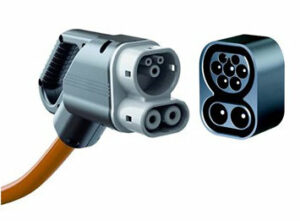
| Charging Point | Max. Power | Avg. Power | Time | Rate |
| CCS (50 kW DC) | 50 kW | 40 kW | 70 min | 200 km/h |
| CCS (100 kW DC) | 100 kW | 75 kW | 37 min | 380 km/h |
| CCS (150 kW DC) | 130 kW | 90 kW | 31 min | 450 km/h |
| Brand | Nissan |
| Model | Ariya 63kWh |
| Body Style | SUV |
| Car Engine | electric |
| Motor power | 160 |
| Maximum Torque, Nm | 300 |
| Battery Energy, kWh | 63.0 |
| Power reserve (NEDC/EPA/WLTP), km | - / - / 335 |
| Level Charging (230/400/DC), hours | - / - / 0.31 |
| Electrical Acceleration, 0-100 km/h (0-62.1 mph) in sec | 7.5 |
| Top Speed, km/h | 160 |





